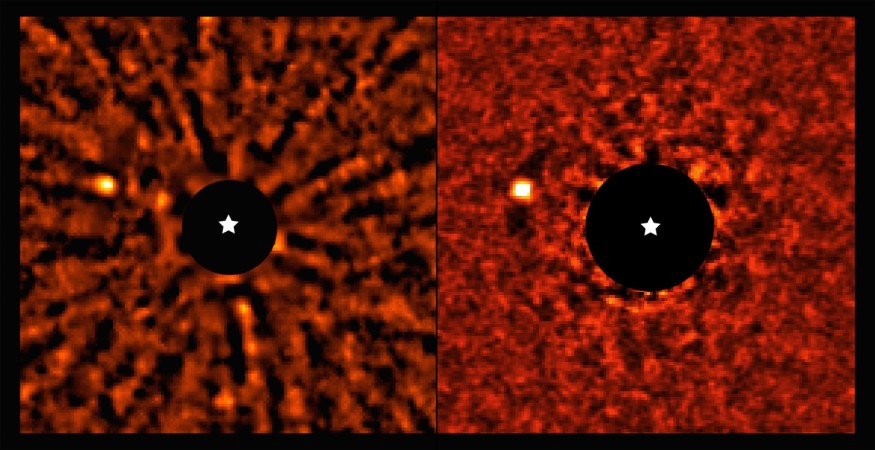Two groups of astronomers led by Dino Mesa from the National Institute for Astrophysics (INAF) in Italy and Robert De Rosa from the European Southern Observatory (ESO) in Chile investigated star catalogs and found a hidden Jupiter-like exoplanet that is only about 87.5 light-years from Earth.

AF Leporis and Its Hidden Exoplanet
The teams used the SPHERE instrument on the Very Large Telescope (VLT) of ESO in Chile to identify the hidden exoplanet orbiting the star called AF Leporis, The Space Academy reported.
The star is located around 87.5 light-years from Earth in the constellation Lepus, just south of the celestial equator. European Space Agency's Hipparcos and Gaia satellite observations provided the two teams of scientists with data concentrated on this star.
These two spacecraft are primarily concerned with mapping the locations and motions of stars in the sky. Using the method of astrometry, the two space missions have properly identified the location and motion of the stars in the galaxy throughout the years.
Planets pull on their host stars, causing their course in the sky to be disrupted. The two teams discovered that the star AF Leporis had a changed trajectory, indicating the presence of a planet, based on the telescopic observations of AF Leporis.
The ESO reports that as the two groups examined this system more closely with the VLT, they were able to get direct photos of the planet circling AF Leporis. The SPHERE instrument, which uses adaptive optics to account for blur produced by atmospheric turbulence while simultaneously blocking light from the star with a specific mask, indicates the presence of an exoplanet.
Scientists discovered that the planet is just around four times the mass of Jupiter, making it the lightest exoplanet yet discovered using astrometric measures and direct observation.
The AF Leporis system is comparable to the Solar System in many ways. For instance, its star has roughly the same mass, size, and temperature as the Sun, and the planet orbits it at a comparable distance as Saturn does the Sun.
The AF Leporis is as massive and as hot as the Sun with a disk of debris similar to the Kuiper Belt. However, it is much younger and that makes it especially intriguing to provide insights into the evolution of star systems. The studies are discussed in two papers available online through arXiv in this link and here, which are submitted for publication in the journals Astronomy and Astrophysics.
Why Imaging Exoplanets Is Difficult
Imaging exoplanets directly is notoriously challenging because planets are substantially brighter than their host stars, as per Space.com. Due to that, astronomers can generally only capture photos of extremely big exoplanets orbiting quite far from their stars.
For example, HIP 65426 b, the first exoplanet directly observed by the legendary James Webb Space Telescope, is 12 times more massive than Jupiter and circles its star more than twice as distant as Pluto orbits the sun.
According to the Planetary Society, less than 5% of the currently known more than 5,300 exoplanets have been directly photographed. Most of these faraway worlds were identified solely because of the dimming impact they have on their host star as they pass in front of it.
Studying the AF Leporis system and alike can help scientists understand how the Solar System began since it is just 24 million years old, or approximately 200 times younger than the Sun.
RELATED ARTICLE: New Rocky Exoplanet Half the Mass of Venus Discovered in Another System Orbiting Star L 98-59
Check out more news and information on Exoplanets in Science Times.
© 2025 ScienceTimes.com All rights reserved. Do not reproduce without permission. The window to the world of Science Times.












